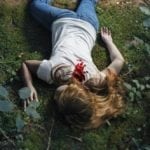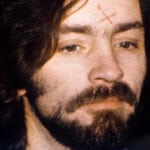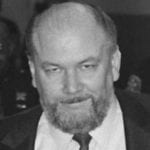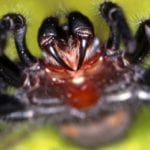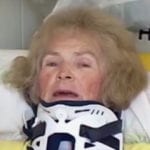 Technology
Technology  Technology
Technology  Humans
Humans 10 Everyday Human Behaviors That Are Actually Survival Instincts
 Animals
Animals 10 Animals That Humiliated and Harmed Historical Leaders
 History
History 10 Most Influential Protests in Modern History
 Creepy
Creepy 10 More Representations of Death from Myth, Legend, and Folktale
 Technology
Technology 10 Scientific Breakthroughs of 2025 That’ll Change Everything
 Our World
Our World 10 Ways Icelandic Culture Makes Other Countries Look Boring
 Misconceptions
Misconceptions 10 Common Misconceptions About the Victorian Era
 Mysteries
Mysteries 10 Strange Unexplained Mysteries of 2025
 Miscellaneous
Miscellaneous 10 of History’s Most Bell-Ringing Finishing Moves
 Technology
Technology Top 10 Everyday Tech Buzzwords That Hide a Darker Past
 Humans
Humans 10 Everyday Human Behaviors That Are Actually Survival Instincts
 Animals
Animals 10 Animals That Humiliated and Harmed Historical Leaders
Who's Behind Listverse?

Jamie Frater
Head Editor
Jamie founded Listverse due to an insatiable desire to share fascinating, obscure, and bizarre facts. He has been a guest speaker on numerous national radio and television stations and is a five time published author.
More About Us History
History 10 Most Influential Protests in Modern History
 Creepy
Creepy 10 More Representations of Death from Myth, Legend, and Folktale
 Technology
Technology 10 Scientific Breakthroughs of 2025 That’ll Change Everything
 Our World
Our World 10 Ways Icelandic Culture Makes Other Countries Look Boring
 Misconceptions
Misconceptions 10 Common Misconceptions About the Victorian Era
 Mysteries
Mysteries 10 Strange Unexplained Mysteries of 2025
 Miscellaneous
Miscellaneous 10 of History’s Most Bell-Ringing Finishing Moves
10 Deadly Assassins Who Stalked The Cold War
Under the surface, the Cold War wasn’t all that cold. All the key players backed campaigns of espionage and even murder. In this environment, assassins flourished like never before. As deadly killers ranged across the world, everyone was a suspect and no one was safe.
10Spray-Gun Man

In 1950, a 19-year-old Ukrainian student named Bohdan Stashynsky was arrested for riding a train without a ticket. The local authorities handed him over to the KGB, who threatened to arrest his family unless he agreed to work for them. After he spent several years infiltrating the anti-Communist underground, the agency felt that he could be trusted. That was when they gave him the gun.
The gun was a small aluminum cylinder that sprayed a jet of liquid cyanide. If this hit someone in the face or chest, the vapors would cause their arteries to suddenly contract, cutting the blood supply to the brain and killing them rapidly (a CIA report concluded that it might “conceivably . . . allow the victim time to scream”). The arteries would return to normal after five minutes, leaving to trace of the poison. Stashynsky tested it on a dog in the woods outside Karlshorst.
In 1957, Stashynsky loomed out of a stairwell in Munich and killed Ukrainian anti-Communist Lev Rebet with a jet of poison. Two years later, he killed Ukrainian nationalist leader Stepan Bandera the same way. He swallowed antidote pills before and after each attack. Both deaths were ruled heart attacks.
They might have stayed that way if Stashynsky hadn’t fallen in love with an East German woman. The KGB disapproved of the relationship and repeatedly tried to break the couple up. When their young son suddenly died, the agency relented and allowed Stashynsky to travel to the funeral in Germany. The couple immediately defected to the West, where Stashynsky confessed to the murders.
9William Bechtel

In a diary found by the Swiss police, William Bechtel wrote, “I can break a man’s neck without his having time to shout. I know how to kill. But I look harmless.” These qualities, picked up in the French Foreign Legion, made him the perfect assassin for the “Red Hand,” a unit of the SDECE spy agency tasked with eliminating anti-French independence leaders in Africa.
One such leader was Cameroonian nationalist Felix Roland-Moumie. In 1960, Bechtel introduced himself to Moumie as a journalist and invited him to dinner in Geneva. An accomplice distracted Moumie with a phone call while Bechtel slipped deadly Thallium into his aperitif. The dose was carefully measured to kill him after he had boarded his flight to Guinea in the early hours of the morning. It was believed that the poison would not be detected by the authorities there.
The plan went wrong when Moumie pushed aside the aperitif and sipped a glass of wine instead. Undeterred, Bechtel poisoned the wine as well, but then Moumie suddenly picked up the aperitif and drained it, giving him a double dose of poison. He died almost immediately and Swiss investigators linked the killing to Bechtel. Protected by the French government, he was never convicted of the murder before his death in 1980. The head of the SDECE later gave a detailed description of the murder.
8Jean-Pierre Cherid

Jean-Pierre Cherid was radicalized as a member of the OAS (“Organization Armee secrete”), a right-wing paramilitary group that opposed Algerian independence and repeatedly tried to assassinate French President Charles de Gaulle. In response, de Gaulle launched his own terrifying underground gang of killers: the SAC (“Service d’Action Civique”).
After the OAS collapsed, Cherid fled to Spain, where he soon found employment as an assassin for the Spanish government. He was particularly active in the war against the Basque separatist group ETA. Among other assassinations, he planted the car bomb that killed ETA leader Jose Benaran Ordenana and planned the murder of Jose Martin Sagardia in southern France. He also led the notorious machine gun attack on the Hendayais bar, which killed two French citizens.
Cherid died in 1984, when he made a mistake while wiring a bomb in Biarritz, France. His mangled remains were recovered from the roof of a neighboring house.
7Michael Townley

In 1973, the Chilean president Salvador Allende died in a US-backed coup. The new junta launched a reign of terror, with the notorious “Caravan of Death” racing across the country murdering political prisoners. Meanwhile, Chile’s secret service (DINA) began recruiting killers to deal with the regime’s overseas enemies. One of their most successful hires was a young American named Michael Townley, who had cut his teeth building bombs for CIA-backed Cuban groups in Miami.
In 1974, Townley planted the car bomb that killed General Carlos Prats, an opponent of the coup who was living in Argentina. The next year, he orchestrated the shooting of exiled politician Bernardo Leighton and his wife in Rome.
In 1976, he carried out his most notorious assassination, when he detonated a bomb in Washington DC, killing former Chilean ambassador Orlando Letelier and an American associate. The murder caused a scandal, especially since Townley and DINA had strong links to the CIA and it was rumored that the agency may have been aware of the plot.
Townley was extradited from Chile to the United States in 1978. In return for his testimony against various Cuban accomplices, he received a light 10-year sentence. He is currently believed to be living quietly as a free man under the Witness Protection Program.
6Josip Perkovic

In 1977, a Serbian exile named Dragisa Kasikovic was found dead in his Chicago office. He had been stabbed over 60 times. His girlfriend’s nine-year-old daughter Ivanka was found nearby, similarly butchered. Dragisa and Ivanka were among dozens of Yugoslavian emigres murdered during the Cold War, from America to Australia to France. The victims were all opponents of the Yugoslav government established by Josip Broz Tito.
Tito famously opposed Soviet influence, and it has been alleged that Western governments were reluctant to investigate the Yugoslav assassination program for fear of damaging their relations. Investigators were allegedly warned against accusing the Yugoslav government and the murders never received the publicity given to assassinations by other Communist states—even though the Yugoslavs killed far more people in the west than the KGB did.
Even after the Cold War ended, there was considerable resistance to going after the perpetrators. When Croatia joined the European Union, it passed a law effectively blocking the extradition of Josip Perkovic, who ran the unit that carried out many of the murders. Perkovic was finally arrested in 2014 and is currently serving a life sentence in Germany for the 1983 murder of exile Stjepan Durekovic.
5Vinko Sindicic

In 1988, football fans flooded into Glasgow for a World Cup qualifier between Scotland and Yugoslavia. One of the “fans” left Glasgow and traveled north to a wooded area, where he retrieved a hidden gun. Carrying on to Kirkcaldy, he shot Croatian dissident Nikola Stedul in the mouth and chest.
Astonishingly, Stedul survived, thanks largely to his dog Pasha, who charged the gunman and alerted the neighbors by barking, forcing him to flee before finishing the job. The assassin was subsequently arrested at Heathrow Airport and identified as Vinko Sindicic, perhaps the deadliest agent of the Yugoslav murder program.
Sindicic is believed to have carried out over a dozen murders around the world. Probably the most notorious is the killing of the journalist Bruno Busic, who was shot in the doorway of his Paris apartment in 1978. An attempt to try Sindicic for the killing collapsed after a disastrous trial and he is currently a free man, having completed 10 years for attempted murder in a British prison.
4Craig Williamson
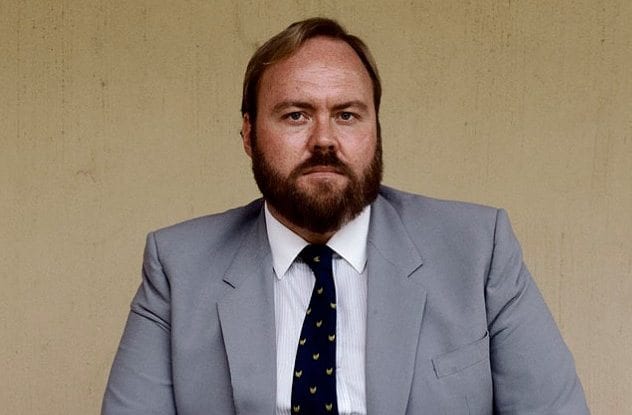
Craig Williamson killed from a distance, but that didn’t make him any less deadly. As South Africa’s “superspy,” he had infiltrated the anti-Apartheid movement during the 1970s, before rising suspicion led to his recall in 1980. Promoted to the rank of major in South African military intelligence, he ordered the bomb maker Jerry Raven to design deadly bombs small enough to be slipped into an envelope. In 1982, he used one of these letter bombs to kill exiled writer and activist Ruth First in Mozambique.
In 1884, he sent another letter bomb to the ANC members Marius and Jeanette Schoon in Angola. The bomb killed Jeanette and the couple’s six-year-old daughter. Williamson had known the couple well during his double agent days and allegedly sent the bomb as revenge for their role in blowing his cover, although he denies this was his motive.
In 2000, South Africa’s Truth and Reconciliation Commission granted Williamson amnesty for all three murders, as well as the 1982 bombing of the ANC office in London. He remains a free man.
3Mehmet Ali Agca
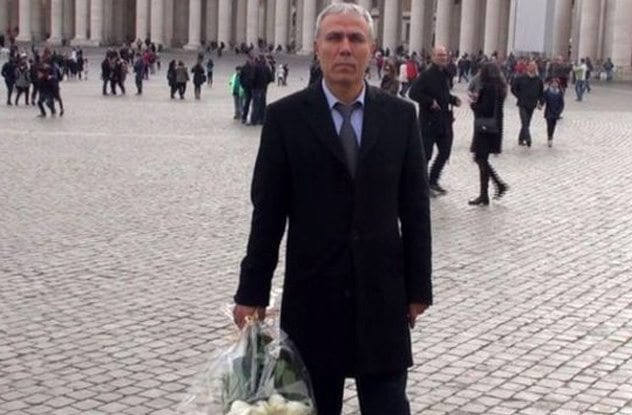
As a young man, Mehmet Ali Agca joined a violent Turkish neo-fascist group called the Grey Wolves, who sent him to Syria to be trained as an assassin. He carried out his first killing in 1979, when he shot the noted newspaper editor Abdi Ipekci.
He later escaped from prison and spent several years on the run. During this time he is believed to have carried out at least one more assassination, gunning down a Turkish nationalist in Germany. Then, in 1981, he pushed through a crowd in Rome and shot the Pope.
John Paul II was hit four times but survived and later publicly forgave Agca. The shooting remains shrouded in mystery. Agca himself made several bizarre and conflicting statements, including a claim to be the Messiah. Experts are split on whether these claims were due to mental illness or a deliberate tactic to throw off investigators.
There is a plausible theory that he was hired by the Bulgarian Secret Service on behalf of the KGB, who were disturbed by the Pope’s popularity in his native Poland. Equally plausible is the theory that he was a crazy person who decided to kill the Pope. Agca was released from prison in 2010 and currently lives in Turkey.
2Mike Harari
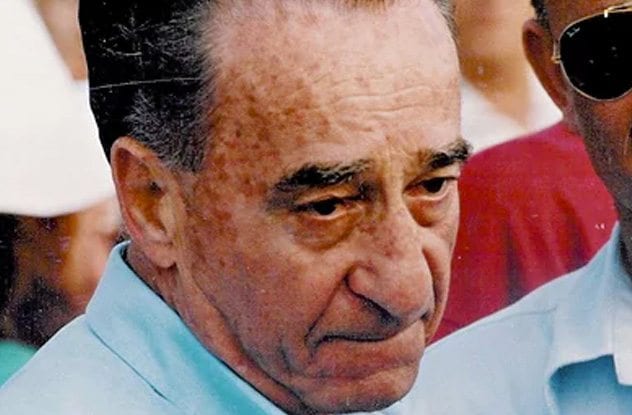
In 1972, the Palestinian terrorist group Black September killed 11 Israeli Olympic athletes in Munich. In response, the Israeli government launched Operation Wrath Of God, which aimed to assassinate the entire leadership of Black September. The leader of the operation was Mike Harari, a Mossad agent and founder of the Kidon assassination unit.
Harari was a legend in Mossad—during the famous raid on Entebbe airport, he personally scouted the location and even got inside the air traffic control tower disguised as an Italian businessman. Under his leadership, the hit squad killed at least seven suspected Black September members across Europe. One man answered his telephone, confirmed his identity, and was immediately killed by a bomb hidden in the receiver.
But Harari’s reputation took a hit when he personally led a mission to Norway which ended up killing an innocent Moroccan waiter who had somehow been mistaken for Black September leader Ali Hassan Salameh. To make matters worse, six members of the squad were arrested by Norwegian authorities. Harari himself escaped, but the damage to Mossad’s reputation was tremendous.
Harari’s last known operation came six years later, when he finally managed to assassinate Salameh, somewhat restoring his image after the Norway fiasco. He died in 2014, having spent much of his retirement denying an alleged stint working for Panamanian dictator Manuel Noriega.
1The Giant, The Killer, And The Old Man
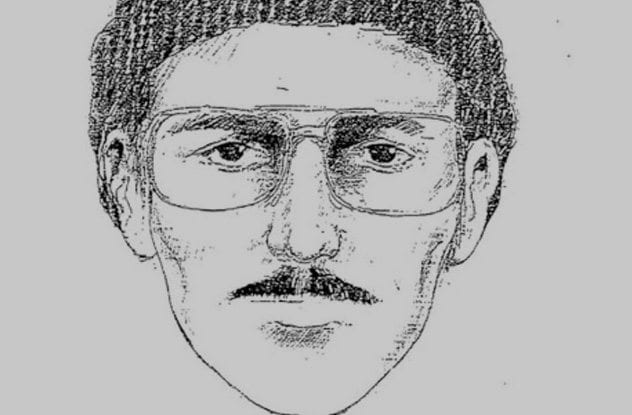
In the early 1980s, the Belgian region of Brabant was terrorized by a mysterious group that killed at least 28 people. The attacks were superficially robberies, but the scale of the violence and the tiny amounts taken made it clear that money wasn’t the real motive.
In one case, the group burst into a supermarket and shot seven people dead, including young children. They made off with a small bag of cash, which was later found unopened in a canal. On another occasion, the group triggered the alarm in a food shop and then waited for the police to arrive. The gendarmes walked right into an ambush.
Three regular members of the gang were tentatively identified. The Giant was a tall man who appeared to be the leader, the Killer was considered the most violent of the group, and the Old Man usually acted as the getaway driver.
It was later revealed that members of the Belgian neo-fascist group Westland New Post had performed surveillance on some of the locations attacked by the killers, apparently on the instruction of their leader Paul Latinus. That has led to speculation that the extreme right-wing carried out the attacks to discredit leftists or undermine the government. It has also been suggested that the group was connected to elements of the Belgian state or the CIA-backed Gladio network. The murders remain unsolved.
